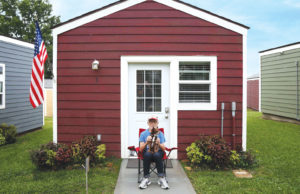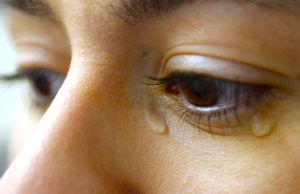Authorities, friends and the family of a boy from The Colony in
A staffer at Stewart’s
The
“We feel like the victim acted alone; we just don’t know why,” said Lt.
boy’s parents, Jason and Debbie, are devastated by his death and
grateful for the help they have received. “The outpouring of support
from the community is very touching,” he said.
Experts say that of all age groups, suicides are rarest in children younger than 10 in
“They are infrequent,” said Dr.
“There is such a small number that there’s little research into that
age group. Most of it focuses on older adolescents and teenagers.”
But experts say younger children often need the same
things as older adolescents — to experience success, belonging and
positive connections. When they lack those things, they can grow
despondent and desperate.
Because of their still-developing sense of awareness, they’re even less likely to fully comprehend the reality of death, said
a regional coordinator for Jason’s Foundation, an organization that
provides youth suicide prevention and awareness programs for teachers,
parents and counselors.
It also has curriculums for children.
“A lot of them think they’ll be back at school tomorrow,” LeBlanc said.
Shortly before his death, Montana visited the school
office to a see a nurse, Brockway said, adding that he did not know the
purpose of the visit.
At some point, the boy asked to use the bathroom.
The nurse soon suspected that something was wrong and went looking for the boy, Brockway said.
“She realized he had been in there too long,” he said.
The child was taken to
Investigators have taken statements from other
children, Brockway said. They will also subpoena the child’s medical
records and review the medical examiner’s report.
“I’ve been asked about bullying,” he said. “Rumors
have popped up. But, as of this point, I don’t have any confirmation of
that.”
Investigators are eager to learn the reason behind the boy’s death to prevent future tragedies, he said.
Counselors were at the school Friday to talk with grieving students, officials said.
Bullying, loss of a loved one and divorce are factors that have been blamed for other cases of child suicide.
In most cases, the children had displayed fairly significant troubles in the past, said Dr.
A misperception is that young children do not
experience depression. About 5 percent of children and adolescents
suffer from it, according to the
Children who are under stress or have attention,
learning or anxiety disorders are at higher risk of depression. It also
runs in families.
Symptoms are often mistaken for adolescent
moodiness, Berman said. Unlike in older people, depression in children
is usually expressed in actions, rather than feelings.
“In general, it may be hard for the layperson to
understand that a child can be clinically depressed,” he said. “The
bottom line is there are children as young as 4 or 5 who are diagnosed
with depression.”
It is important to remember, however, that in 40
percent of suicides, the victims do not exhibit symptoms of depression,
he said.
That a child under 10 is aware of suicide is not that surprising, he said.
“With television and the Internet, you can’t be a child in today’s society and not be exposed to violent images,” he said.
Many experts say the number of suicides among younger children is likely higher than is reflected in statistics.
Some coroners and medical examiners are reluctant to rule the deaths of young children as suicides, Berman said.
Those deaths, he said, may instead be ruled
accidents because of the belief that young children don’t truly
understand the permanent consequence of their action.
However, there is evidence that some children have the cognitive ability to grasp the concept by age 6 or 7.
“Children under the age of 10 — if they are 8 or 9,
in particular — are capable of understanding the consequence of the
action,” Berman said. “That is, ‘That I will no longer exist in this
life as I know it.’ “
LeBlanc said the curriculum offered to students by
Jason’s Foundation is for seventh- through 12th-graders. Training for
teachers, parents and counselors is also offered at elementary schools.
The youngest child suicide that the organization knows of was an 8-year-old, he said.
The aftermath of suicides is like piecing together a puzzle of warning signs, said
It often turns out that different people — a parent, a teacher, a coach — all had different pieces.
“There are sad kids, angry kids and confused kids,”
he said. “There are signs there you can pick up on if you are watching
for them. It is important for adults to communicate these signs to each
other before a tragic event occurs.”
Signs of depression in children
—Frequent sadness, crying
—Decreased interest in favorite activities
—Persistent boredom, low energy
—Social isolation, poor communication
—Low self-esteem, guilt
—Increased sensitivity to rejection
—Increased irritability, anger or hostility
—Frequent complaints of physical illness, like headaches or stomachaches
—Frequent absences from school
—Major changes in sleeping and eating habits
Suicide deaths in U.S. youths, 1999-2006
—Ages 5 to 9: 33
—Ages 10-14: 2,087
—Ages 15 to 19: 12,715
To get help
National Suicide Prevention Lifeline: 800-273-8255
Sources:
—
(c) 2010, Fort Worth Star-Telegram.
Visit the
Distributed by McClatchy-Tribune Information Services.














